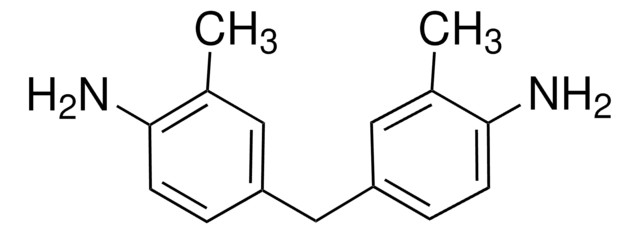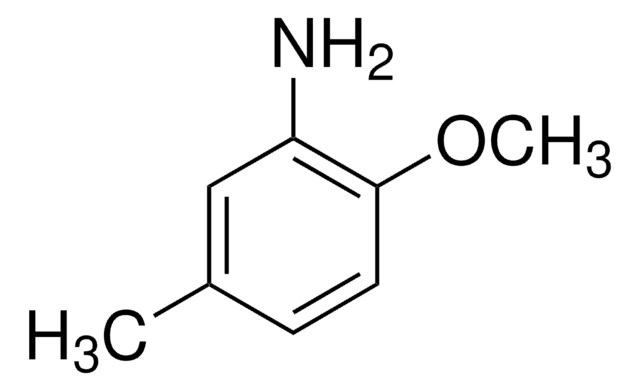66681
4,4′-Methylene-bis(2-chloroaniline)
analytical standard
Sinonimo/i:
2,2′-Dichloro-4,4′-methylenedianiline, 4,4′-Diamino-3,3′-dichlorodiphenylmethane
About This Item
Prodotti consigliati
Grado
analytical standard
Durata
limited shelf life, expiry date on the label
tecniche
HPLC: suitable
gas chromatography (GC): suitable
P. ebollizione
202-214 °C/0.3 mmHg (lit.)
Punto di fusione
102-107 °C (lit.)
applicazioni
environmental
Formato
neat
Stringa SMILE
Nc1ccc(Cc2ccc(N)c(Cl)c2)cc1Cl
InChI
1S/C13H12Cl2N2/c14-10-6-8(1-3-12(10)16)5-9-2-4-13(17)11(15)7-9/h1-4,6-7H,5,16-17H2
IBOFVQJTBBUKMU-UHFFFAOYSA-N
Cerchi prodotti simili? Visita Guida al confronto tra prodotti
Descrizione generale
Applicazioni
- Urine samples by high performance liquid chromatography (HPLC).[2]
- Textile samples by HPLC coupled to tandem mass spectrometry (MS/MS) equipped with multiple reaction monitoring (MRM) mode of detection.[3]
- Plastic multilayer food packaging materials by LC-Orbitrap-full scan-high resolution mass spectrometry (HRMS) equipped with electrospray ionization (ESI) source.[4]
Altre note
Prodotti consigliati
Avvertenze
Danger
Indicazioni di pericolo
Consigli di prudenza
Classi di pericolo
Acute Tox. 4 Oral - Aquatic Acute 1 - Aquatic Chronic 1 - Carc. 1B - Muta. 2
Codice della classe di stoccaggio
6.1C - Combustible acute toxic Cat.3 / toxic compounds or compounds which causing chronic effects
Classe di pericolosità dell'acqua (WGK)
WGK 3
Punto d’infiammabilità (°F)
235.4 °F - closed cup
Punto d’infiammabilità (°C)
113 °C - closed cup
Dispositivi di protezione individuale
Eyeshields, Gloves, type P3 (EN 143) respirator cartridges
Elenchi normativi
Forniamo informazioni su eventuali restrizioni prevalentemente per i prodotti chimici. Per altre tipologie di prodotto siamo in grado di fornire soltanto informazioni limitate. Nessuna segnalazione significa che nessuno dei componenti è citato in un elenco. È dovere dell’utilizzatore assicurarsi che il prodotto venga impiegato in maniera sicura e a norme di legge.
EU REACH SVHC Candidate List
EU REACH Annex XVII (Restriction List)
EU REACH Annex XIV (Authorisation List)
Scegli una delle versioni più recenti:
Possiedi già questo prodotto?
I documenti relativi ai prodotti acquistati recentemente sono disponibili nell’Archivio dei documenti.
I clienti hanno visto anche
Filtri attivi
Il team dei nostri ricercatori vanta grande esperienza in tutte le aree della ricerca quali Life Science, scienza dei materiali, sintesi chimica, cromatografia, discipline analitiche, ecc..
Contatta l'Assistenza Tecnica.














